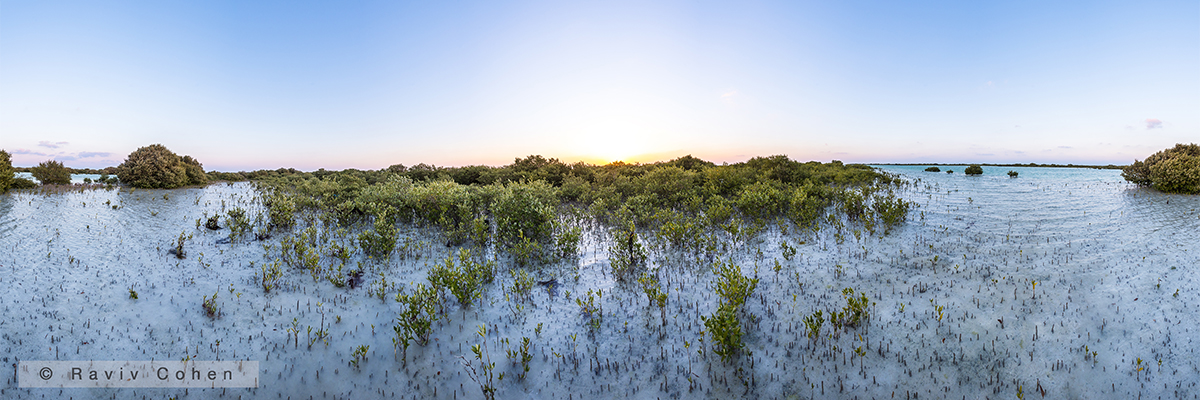
In the 1980s, the mangrove Avicennia marina, naturally occuring in Al Thakira, was afforested along the coastline of Qatar to prevent coastal erosion and habitat loss. These seedlings planted in Messaid, Al Wakra, and in other shores, have become lush forests, having engineered a whole ecosystem, which is one of the most productive in the marine environment, alongside coral reefs and seagrass beds.
The mangrove tree itself, has evolved adaptations to life in very saline habitats, by excreting salt crystals under its leaves, and to life in sediments that get quickly depleted of oxygen, by bringing in extra oxygen using external lungs; root extensions called pneumatophores. Furthermore, the mangrove is a viviparous plant, growing its seedling from seed on the mother plant before its release on the coastal habitat. This mechanism significantly increases success in getting established in the ever-changing coastal and intertidal ecosystems.
Mangrove forests provide shelter, and serve as feeding and nursery grounds for a myriad of organisms. Organisms may be hosted on the actual mangrove, around the root system or in the general area of the forest. Crabs, gastropods, fishes, shrimp and Mudskippers are some of the common inhabitants. Mangrove forests are also a transient home to marine birds visiting during their fall and spring migration along the East Africa/West Asia Flyway.
Mangrove forests may be found in the intertidal zone, as well as in sandy and rocky beaches. The plant community that associates with mangroves in the intertidal, include Salicornia europaea, Suaeda maritima, and Arthrocnemum macrostachyum among others. While in sandy and rocky beaches, mangroves may be surrounded by Cistanche tubulosa, Tamarix passerinides, Aeluropus lagopoides, and grass Halopyrum mucronatum, the latter three known for their ability to create phytogenic sand dunes by entrapping sand.
Climate change induced phenomena pose a threat to the health of mangrove forest ecosystem and to the organisms that it supports. Coastline development is another threat since these trees are uprooted in the process and thus the habitat is lost to all the resident organisms. Finally, mangrove trees are also “nutritionally” impacted when seaweeds like Sargassum boveanum get wrapped around and cover the photocenters of leaves, rendering them unable to carry out photosynthesis to produce organic molecules essential for their growth.
© Chatziefthimiou AD. 2019. Coastal Marine Environment in Qatar: Mangroves. Qatar e-Nature.
Sources:
Basson PW et al, 1977
Al-Khayat J, 2014
Naser HA, 2014
Almahasheer H, 2018
Walton MEM et al, 2014
Sale P et al, 2011







